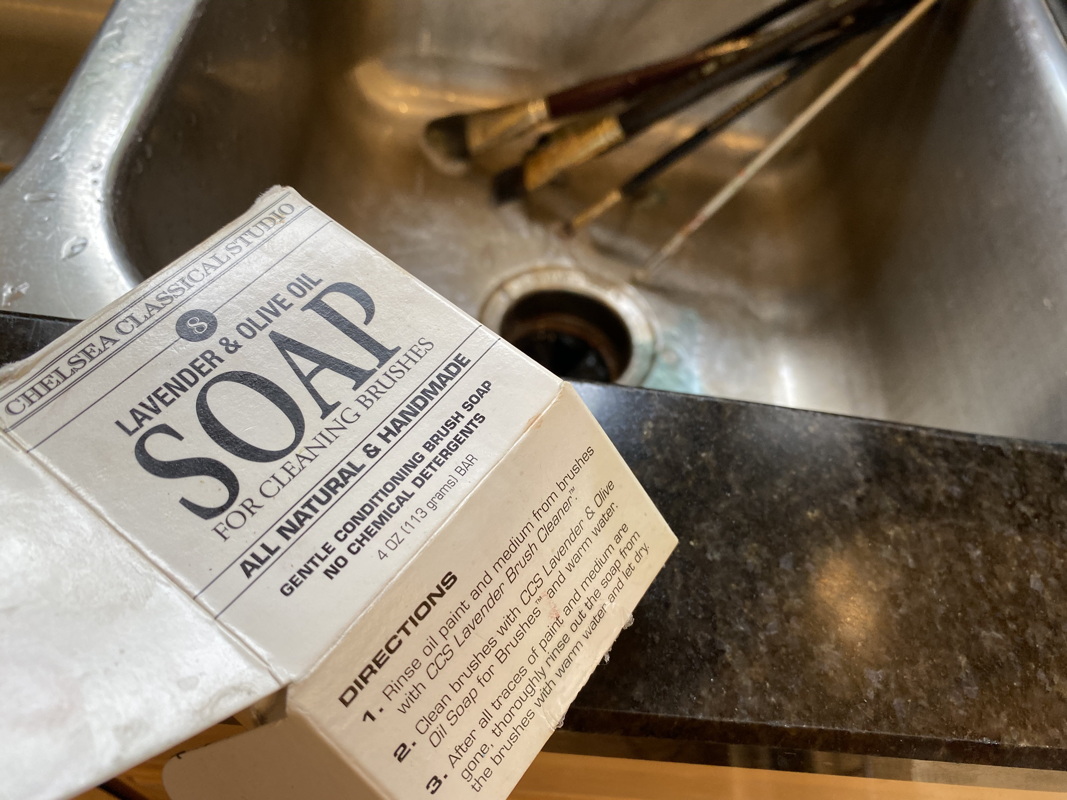
A brush is an artist’s friend, so we need to take care of our pals…
When my kids were little they had those horrible brushes with the plastic bristles that were cut flat and yet managed to stick up everywhere. Gotten in watercolor sets or from birthday gifts. These little monsters…
And I always would grab them and say, “Let me get you a real brush”… so my kids used professional brushes from an early age. And when they didn’t clean them properly, (which is what kids do) I would remind them (in a kind mommy voice) that a brush is an artist’s friend and that they need to treat them with TLC.
And recently I discovered Rosemary Brushes. Oh man! It really did change the way I paint in oils and it is the reason why I like this medium now. But they can be pricey. So not taking care of them would just be silly on my part.
So let’s talk about cleaning brushes. I have been working in oil and typically the solvent for oil paint is Odorless Mineral Spirits or OMS. Some use turpenoid (just as toxic) because they think it is less harmful to breathe in the fumes. But it is not. Please never use regular turpentine. It is so dangerous to your heath! For most of my life I have avoided oils because working with them can give me headaches. And of course there are the stories of wonderful oil painters dying from lung cancer. So just be safe.
I use either Gamsol made by Gamblin or Lavender Spike Oil. The latter being non-toxic, but it does have a strong lavender smell. It also dries much faster than gamsol, so loose, wishy-washy underpainting are tougher. But I like it. It is more expensive too. No matter what I am using I only use a tiny bit. Remember Bob Ross? He the would dip his brush in a vat of OMS (or turpentine I am guessing) and then just smack the crap out of it on the easel and let the solvent fly everywhere? No wonder his hair was so curly…
I tell my students you only need a tiny layer in the bottom of a jar for painting all day. And even then I put the top on the jar and only take it off when I need it. Why inhale it all day long? As for cleaning the brushes, you only need to dip the brush gently in the solvent – no swirling! Keep the solvent clean, and then wipe the paint from the brush out on a rag. Easey-peazey lemon squeezy. This will leave you with only a thin film left on the brushes. I make sure NO solvents touch my skin- so important- and I hardly use any of the Lavender oil in my mixtures. I don’t have a lot of ventilation where I paint now so it is so important.
The first thing you need to know about cleaning a brush properly is NO HOT WATER! There is glue in the ferrel (metal part) of the brush and repeated soakings in hot water will loosen up the glue and potentially the bristles over time. Just cool water is best. I then use Dawn dish soap to clean out the brushes. When I have a bunch that need washed after a day or two of painting, I just soak them in Dawn and leave them to sit for a bit.

Dawn is great for removing oil from your dishes, so it works great here too. Then rinse them under water with the brush pointing down- again to save the bristles.

Then I discovered this great lavender and olive oil soap which works wonders and leaves the bristles feeing very soft. I run the brushes over this block of soap at the end and it cleans whatever is left. I highly recommend it.


And there you have it! All squeaky and ready to go for the next session. I do miss pastel for the simple reason that I don’t have to clean anything when I am done for a session, but this brush thing is pretty fun.
